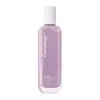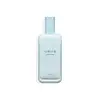What's inside
What's inside
 Key Ingredients
Key Ingredients

 Benefits
Benefits

 Concerns
Concerns

 Ingredients Side-by-side
Ingredients Side-by-side

Water
Skin ConditioningLavandula Angustifolia Flower Water
Skin ConditioningPropanediol
SolventCaprylic/Capric Triglyceride
MaskingGlycerin
HumectantButylene Glycol Dicaprylate/Dicaprate
EmollientCrithmum Maritimum Callus Culture Filtrate
Skin ProtectingHydrogenated Lecithin
EmulsifyingCeramide NP
Skin ConditioningSodium Hyaluronate
HumectantErythritol
HumectantSqualane
EmollientHydroxyethyl Urea
HumectantAllantoin
Skin ConditioningDextrin
AbsorbentGardenia Taitensis Callus Extract
AntioxidantCeteareth-6 Olivate
EmulsifyingAmmonium Acryloyldimethyltaurate/Vp Copolymer
Cetyl Alcohol
EmollientDipotassium Glycyrrhizate
HumectantTocopherol
AntioxidantDisodium EDTA
Butylene Glycol
HumectantPentylene Glycol
Skin ConditioningCaprylyl Glycol
EmollientHydroxyacetophenone
Antioxidant1,2-Hexanediol
Skin ConditioningWater, Lavandula Angustifolia Flower Water, Propanediol, Caprylic/Capric Triglyceride, Glycerin, Butylene Glycol Dicaprylate/Dicaprate, Crithmum Maritimum Callus Culture Filtrate, Hydrogenated Lecithin, Ceramide NP, Sodium Hyaluronate, Erythritol, Squalane, Hydroxyethyl Urea, Allantoin, Dextrin, Gardenia Taitensis Callus Extract, Ceteareth-6 Olivate, Ammonium Acryloyldimethyltaurate/Vp Copolymer, Cetyl Alcohol, Dipotassium Glycyrrhizate, Tocopherol, Disodium EDTA, Butylene Glycol, Pentylene Glycol, Caprylyl Glycol, Hydroxyacetophenone, 1,2-Hexanediol
Sea Water
HumectantGlycerin
HumectantCaprylic/Capric Triglyceride
Masking1,2-Hexanediol
Skin ConditioningWater
Skin ConditioningGlyceryl Stearate Se
EmulsifyingHydroxyethyl Acrylate/Sodium Acryloyldimethyl Taurate Copolymer
Emulsion StabilisingCetearyl Olivate
Carbomer
Emulsion StabilisingHydrolyzed Jojoba Esters
Skin ConditioningSorbitan Olivate
EmulsifyingEthylhexylglycerin
Skin ConditioningCitrus Aurantium Bergamia Fruit Oil
MaskingArginine
MaskingDisodium EDTA
Sorbitan Isostearate
EmulsifyingMelia Azadirachta Leaf Extract
Skin ConditioningMelia Azadirachta Flower Extract
Skin ConditioningCoccinia Indica Fruit Extract
Skin ConditioningButylene Glycol
HumectantAloe Barbadensis Flower Extract
EmollientGluconolactone
Skin ConditioningSqualane
EmollientSolanum Melongena Fruit Extract
Skin ConditioningSea Salt
AbrasiveOcimum Sanctum Leaf Extract
Skin ConditioningCurcuma Longa Root Extract
MaskingCorallina Officinalis Extract
Skin ConditioningCentella Asiatica Extract
CleansingSea Silt Extract
Skin ConditioningCrithmum Maritimum Extract
Skin ConditioningGynostemma Pentaphyllum Leaf/Stem Extract
AntioxidantHizikia Fusiforme Extract
Skin ConditioningGelidium Cartilagineum Extract
Skin ProtectingSpirulina Platensis Extract
Skin ProtectingSargassum Fulvellum Extract
Skin ConditioningUndaria Pinnatifida Extract
Skin ConditioningLaminaria Japonica Extract
Skin ProtectingHouttuynia Cordata Extract
Skin ConditioningLimonene
PerfumingLinalool
PerfumingSea Water, Glycerin, Caprylic/Capric Triglyceride, 1,2-Hexanediol, Water, Glyceryl Stearate Se, Hydroxyethyl Acrylate/Sodium Acryloyldimethyl Taurate Copolymer, Cetearyl Olivate, Carbomer, Hydrolyzed Jojoba Esters, Sorbitan Olivate, Ethylhexylglycerin, Citrus Aurantium Bergamia Fruit Oil, Arginine, Disodium EDTA, Sorbitan Isostearate, Melia Azadirachta Leaf Extract, Melia Azadirachta Flower Extract, Coccinia Indica Fruit Extract, Butylene Glycol, Aloe Barbadensis Flower Extract, Gluconolactone, Squalane, Solanum Melongena Fruit Extract, Sea Salt, Ocimum Sanctum Leaf Extract, Curcuma Longa Root Extract, Corallina Officinalis Extract, Centella Asiatica Extract, Sea Silt Extract, Crithmum Maritimum Extract, Gynostemma Pentaphyllum Leaf/Stem Extract, Hizikia Fusiforme Extract, Gelidium Cartilagineum Extract, Spirulina Platensis Extract, Sargassum Fulvellum Extract, Undaria Pinnatifida Extract, Laminaria Japonica Extract, Houttuynia Cordata Extract, Limonene, Linalool
Ingredients Explained
These ingredients are found in both products.
Ingredients higher up in an ingredient list are typically present in a larger amount.
1,2-Hexanediol is a synthetic liquid and another multi-functional powerhouse.
It is a:
- Humectant, drawing moisture into the skin
- Emollient, helping to soften skin
- Solvent, dispersing and stabilizing formulas
- Preservative booster, enhancing the antimicrobial activity of other preservatives
Butylene Glycol (or BG) is used within cosmetic products for a few different reasons:
Overall, Butylene Glycol is a safe and well-rounded ingredient that works well with other ingredients.
Though this ingredient works well with most skin types, some people with sensitive skin may experience a reaction such as allergic rashes, closed comedones, or itchiness.
Learn more about Butylene GlycolThis ingredient is an emollient, solvent, and texture enhancer. It is considered a skin-softener by helping the skin prevent moisture loss.
It helps thicken a product's formula and makes it easier to spread by dissolving clumping compounds.
Caprylic Triglyceride is made by combining glycerin with coconut oil, forming a clear liquid.
While there is an assumption Caprylic Triglyceride can clog pores due to it being derived from coconut oil, there is no research supporting this.
Learn more about Caprylic/Capric TriglycerideDisodium EDTA plays a role in making products more stable by aiding other preservatives.
It is a chelating agent, meaning it neutralizes metal ions that may be found in a product.
Disodium EDTA is a salt of edetic acid and is found to be safe in cosmetic ingredients.
Learn more about Disodium EDTAGlycerin is already naturally found in your skin. It helps moisturize and protect your skin.
A study from 2016 found glycerin to be more effective as a humectant than AHAs and hyaluronic acid.
As a humectant, it helps the skin stay hydrated by pulling moisture to your skin. The low molecular weight of glycerin allows it to pull moisture into the deeper layers of your skin.
Hydrated skin improves your skin barrier; Your skin barrier helps protect against irritants and bacteria.
Glycerin has also been found to have antimicrobial and antiviral properties. Due to these properties, glycerin is often used in wound and burn treatments.
In cosmetics, glycerin is usually derived from plants such as soybean or palm. However, it can also be sourced from animals, such as tallow or animal fat.
This ingredient is organic, colorless, odorless, and non-toxic.
Glycerin is the name for this ingredient in American English. British English uses Glycerol/Glycerine.
Learn more about GlycerinSqualane is an emollient that helps the skin hold onto moisture. It's an oily liquid that occurs naturally in certain types of fish and plant oils.
Because squalane boosts hydration in the skin, it also comes with plenty of benefits: it is an antioxidant and can help fight free radicals and skin damage. Squalane is also found to have a detoxifying effect when applied.
Squalane comes from squalene, which occurs naturally within the sebum of our skin. It is one of the oils our skin produces to keep itself hydrated. Squalane is the hydrogenated version of squalene and has a longer shelf life.
Research shows that squalane is non-irritating (even at 100% concentration).
In general, it's a fantastic ingredient. It does a great job at hydrating the skin, and it's suitable for those with sensitive skin.
The source of squalane may impact malassezia / fungal acne. This is because olive oil derived squalane can contain impurities such as fatty acids and plant waxes. Sugarcane derived squalane is recommended for anyone with malassezia concerns.
Is squalane vegan?
This depends on the source. Squalane can be derived from both plants and animals. Most squalane used in skincare comes from plants.
Please note: the source of squalane is only known if disclosed by the brand. We recommend reaching out to the brand if you have any questions about their squalane.
Read more about squalene with an "e".
Is squalane an oil?
Squalane is often called an oil, but it’s technically not; it’s a hydrocarbon, meaning it’s only made of carbon and hydrogen, unlike true oils which are triglycerides made of fatty acids and glycerol.
The term “oil-free” isn’t regulated, so companies can define it however they want. Some exclude all oils, while others just avoid mineral oil or comedogenic oils.
While some people avoid oils thinking they cause breakouts, the right kind of oil (or oil-like ingredient like squalane) can actually help balance and hydrate your skin. It’s worth testing out simple oils or squalane to see what works best for your skin.
Learn more about SqualaneWater. It's the most common cosmetic ingredient of all. You'll usually see it at the top of ingredient lists, meaning that it makes up the largest part of the product.
So why is it so popular? Water most often acts as a solvent - this means that it helps dissolve other ingredients into the formulation.
You'll also recognize water as that liquid we all need to stay alive. If you see this, drink a glass of water. Stay hydrated!
Learn more about Water